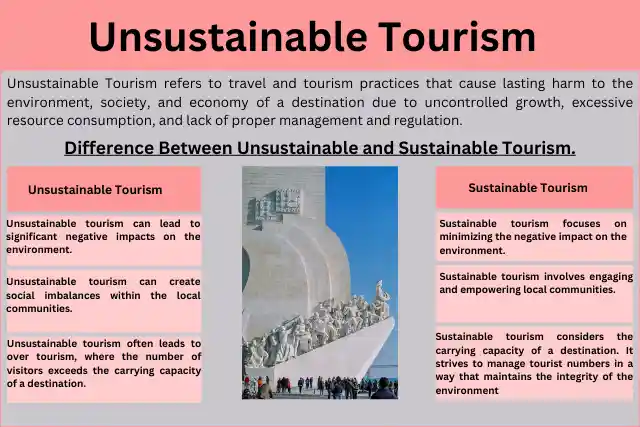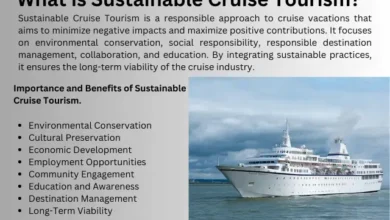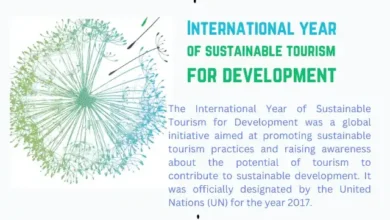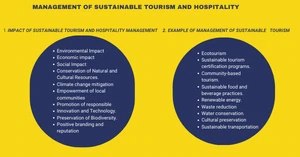
Unsustainable Tourism
Tourism has become a booming global industry, offering countless opportunities for exploration, cultural exchange, and economic growth. However, the rapid growth of the tourism sector has also given rise to a darker side of unsustainable tourism. This form of tourism is characterized by practices that exploit natural resources, damage ecosystems, and negatively impact local communities. In this article, we explore the concept of unsustainable tourism, examining its various facets and the urgent need for change to preserve our planet and its diverse cultures.
What is Unsustainable Tourism?
Unsustainable tourism refers to travel and tourism practices that cause lasting harm to the environment, society, and economy of a destination due to uncontrolled growth, excessive resource consumption, and lack of proper management and regulation.
What does Unsustainable mean in Geography?
In geography, “unsustainable” refers to practices or conditions that cannot be maintained or continued over the long term without causing significant negative impacts on the environment, society, or economy. When something is deemed unsustainable in geography, it implies that it is not compatible with the preservation of ecological balance, social well-being, or economic stability. Sustainable practices, on the other hand, are those that aim to strike a balance between human needs and the capacity of the environment to support them without compromising future generations’ ability to meet their own needs.
Causes of Unsustainable Tourism
There are different causes of unsustainable tourism.
- Profit-Driven Approach.
- Lack of Regulation.
- Global Economic Disparities.
- Consumer Demand
- Lack of awareness
Profit-Driven Approach
The relentless pursuit of profits can overshadow sustainability concerns. Tourist destinations may prioritize short-term financial gains over long-term environmental and social welfare.
Lack of Regulation
Insufficient or poorly enforced regulations allow tourism activities to run unchecked, leading to overdevelopment, excessive resource consumption, and environmental degradation.
Global Economic Disparities
Economic disparities between developed and developing nations can lead to tourism becoming a double-edged sword. While tourism revenue is essential for developing economies, it can also exacerbate social and environmental issues.
Consumer Demand
Tourists’ preferences and expectations can play a role in driving unsustainable tourism. A desire for cheap, fast, and convenient travel can contribute to over tourism and environmental damage.
Lack of Awareness
Some travelers may not fully grasp the impact of their actions while traveling. A lack of awareness about sustainable travel practices can inadvertently contribute to unsustainable tourism.
The Destructive Nature of Unsustainable Tourism
Environmental Degradation
Unsustainable tourism poses a significant threat to the environment. From increased pollution to overconsumption of water resources and energy, tourist activities can lead to the degradation of delicate ecosystems and harm wildlife.
Loss of Biodiversity
Popular tourist destinations often harbor unique biodiversity hotspots. However, unsustainable tourism, through activities like habitat destruction and wildlife disturbance, can contribute to the loss of species and disrupt ecological balance.
Over Tourism and Congestion
Unsustainable tourism can lead to overcrowding, especially in renowned tourist hotspots. Over tourism not only strains infrastructure but also diminishes the overall experience for both visitors and locals.
Cultural Erosion
Many tourist destinations are home to rich cultural heritage and traditions. However, when tourists and businesses prioritize commercial interests over cultural preservation, the authenticity of local traditions can be compromised, leading to cultural erosion.
Social Exploitation
In some cases, tourism can exploit vulnerable communities by imposing foreign values and norms, altering local customs, and forcing certain areas to cater solely to tourists’ desires, disregarding the needs of the local population.
What is the difference between unsustainable and sustainable tourism?
The main difference between unsustainable and sustainable tourism lies in their impact on the environment, local communities, and cultural heritage. Let’s explore the distinctions between the two.
| Unsustainable Tourism | Sustainable Tourism |
|
Environmental Impact: Unsustainable tourism can lead to significant negative impacts on the environment. It may result in overexploitation of natural resources, pollution, habitat destruction, and damage to delicate ecosystems. Popular tourist destinations may suffer from environmental degradation due to the large influx of tourists. |
Environmental Conservation: Sustainable tourism focuses on minimizing the negative impact on the environment. It aims to protect natural resources, reduce pollution, promote biodiversity conservation, and adopt eco-friendly practices in the tourism industry. |
|
Social Disruption: Unsustainable tourism can create social imbalances within the local communities. Economic benefits may not be evenly distributed, leading to the concentration of wealth in the hands of a few, while the majority of the local population remains marginalized. Additionally, the influx of tourists can disrupt the traditional way of life and cultural practices of local communities. |
Responsible Community Engagement: Sustainable tourism involves engaging and empowering local communities. It seeks to ensure that local communities benefit economically from tourism, have a say in tourism development, and their cultural heritage is respected and preserved. |
|
Over Tourism: Unsustainable tourism often leads to over tourism, where the number of visitors exceeds the carrying capacity of a destination. This can lead to overcrowding, congestion, strain on infrastructure, and a decline in the quality of the visitor experience. |
Carrying Capacity: Sustainable tourism considers the carrying capacity of a destination. It strives to manage tourist numbers in a way that maintains the integrity of the environment and the well-being of the local communities. |
| Economic Leakage:
In many cases, a significant portion of the revenue generated from tourism may leak out of the destination to international corporations or tour operators, leaving local communities with limited benefits from tourism activities. |
Economic and Social Benefits:
Sustainable tourism aims to create economic opportunities for local communities through tourism. It supports local businesses, encourages the use of locally sourced goods and services, and contributes to community development. |
| Long-Term Vision:
Sustainable tourism adopts a long-term perspective, ensuring that the benefits of tourism are sustained over time without compromising the well-being of future generations. |
|
| Environmental and Cultural Education:
Sustainable tourism often includes educational programs to raise awareness among tourists about the importance of environmental conservation and cultural respect. This helps tourists make responsible choices during their travels. |
Conclusion
Unsustainable tourism poses significant threats to the environment, communities, and cultural heritage. Embracing sustainable practices, with a focus on conservation and responsible engagement, is vital for preserving our planet’s treasures. Let us work together to create a positive impact on the tourism industry and safeguard its beauty for future generations.




